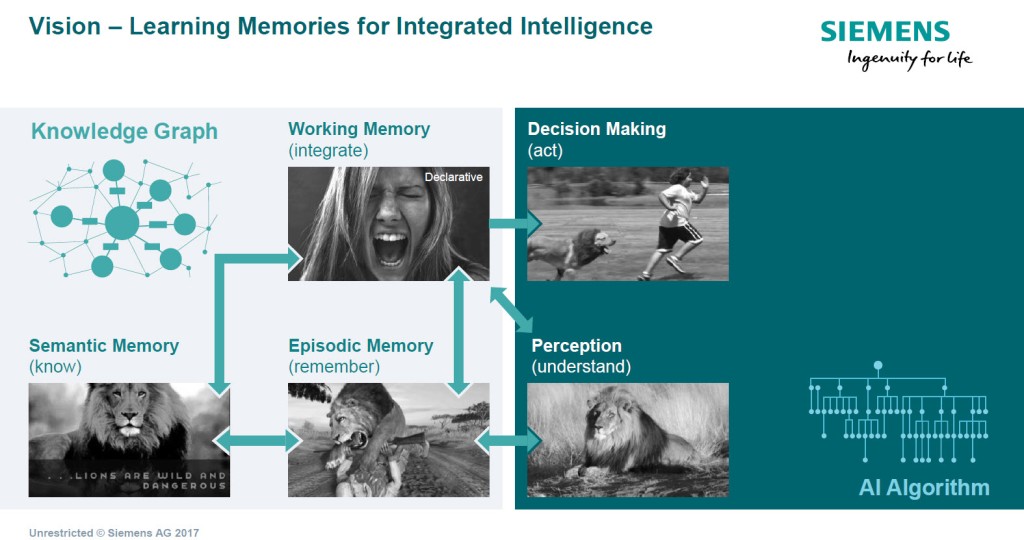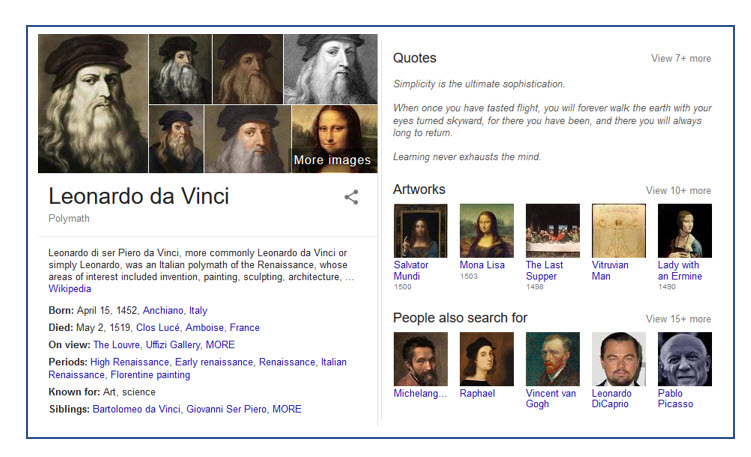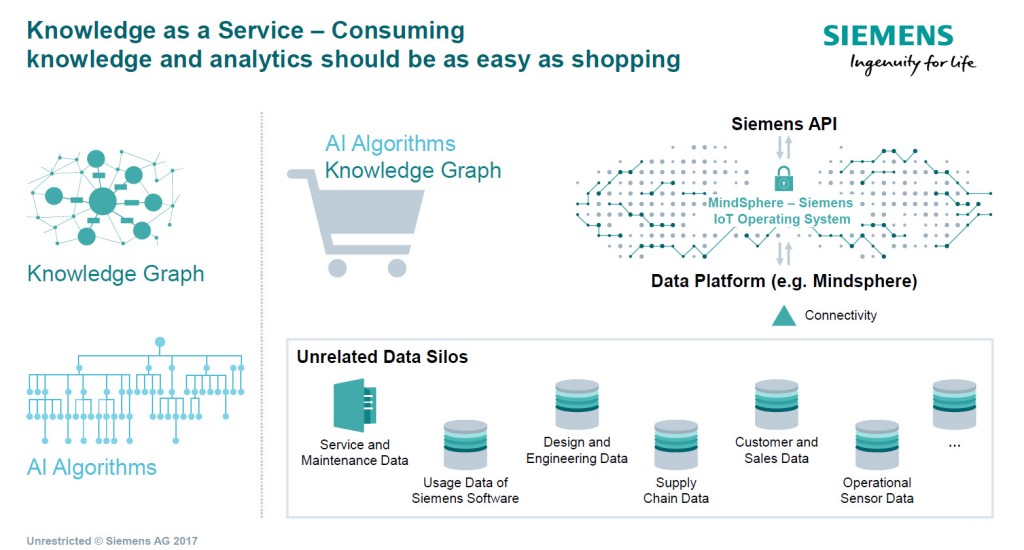How does Knowledge Graphs fit within our need to communicate in new, visually exciting ways?
Let me provide a short narrative to give this a meaning and why it is becoming so important
 Today we deliver content- It has become far too easy. We are drowning in it on a daily basis. We all suffer a massive deluge of digital input. Content can’t stand alone.
Today we deliver content- It has become far too easy. We are drowning in it on a daily basis. We all suffer a massive deluge of digital input. Content can’t stand alone.
- What we need is context to anchor content and give it the clear meaning to understand………..that’s our necessary starting point.
Context shifts everything, it gives it shape, a structure to draw (deeper) meaning from. We learn to know, to integrate, to remember, to understand and to act.
Of course, context is going to be fluid as it builds out its related content.
Having content and context is complementary, interconnected, and interdependent, they interrelate to one another.
As we gain more insights we can potentially build a greater understanding. We simply improve our knowledge.
It is going to be needed to be adaptive as we learn but it will be placed in ‘certain bounds’. If we start from a much clearer starting base then the learning and discovery allow people to want to find solutions as they gain increased knowledge and provide fresh inputs, they begin to strongly relate. We pass through memory understanding as we learn.

“ Context provides the innovation marching orders” in my world
- We achieve a higher sensitivity to needs and understanding, we begin to relate
- We engage more, we can dialogue more, we ‘unite’ more in relating
- It adds more value to our thinking, it triggers additional ideas and contribution
- Functionality and Capability then follow from this- we build it differently
Context gives us certain guard rails or borders to help gain a more united focus. Where we go after that, by pushing those borders will depend on those involved, by us collectively seeing a greater value in an evolving context of mutual understanding.
- The ‘setting it in context’ allows for dialogue, adding more value to the thinking.
Context needs to also become, increasingly the arbitrator of success. Around this, you form your community that seeks out the possible solutions to this. Context gives knowledge into the hands of others to go and work on finding possible solutions.
- Knowing the context gives us something highly relevant to judge eventual outcomes on.
Q: How can we absorb and learn differently?
- We are overwhelmed by “content stock”
- We need to understand (increasingly) what is relevant to us
- How should we engage? What can make it easier?
- We need to build content creation for a context-specific world
- This needs to be increasingly tailored to our needs with help increasingly from (AI + Machine Learning)
Introducing the notion of Knowledge Graphs (KG) – its value and purpose
Here I wanted to give a deeper explanation of knowledge graphs- a ‘potted’ history and future view.
I wrote about Knowledge Graphs “The Arrival and Potential of Knowledge Graphs Into Our World” to give them a little depth of understanding.
So, my attempt here in this post is to give Knowledge Graphs a more ”layman” context so we can begin to see how this “Knowledge Graph” concept can become really important to recognize, support and apply in our lives. They help us relate faster.
KG will equally become a significant contributor to the industrial application as well, as increasingly it will build knowledge visually and be part of our everyday working life in related searches
I recently heard Knowledge Graphs will become as topical as “Artifical Intelligence” as a prediction for use in an industrial application.
We are told Artificial Intelligence is meant to be a panacea to solve all this current ‘disconnects’. No, not without solutions like Knowledge Graphs alongside them, well actually underpinning much within AI
It is once we try to make all the ‘connects’ in the knowledge that is out there, waiting to form new relationships, we unleash our connected understanding in completely new ways……….we become more creative, informed and innovative….so let’s look at these a little more:
Knowledge Graphs captures the relationship between people, processes, applications, data- the things and their relationships
KG makes the connections for “contextual information”
- We need to stop stringing together to build a picture of things, piece by piece
- We need a way to bring together contextual knowledge in greater collective forms
Connecting knowledge is one of our biggest challenges today
The more you “see” within the relationships the better the insight, to influence decisions, to set actions and directions.
This leads to “cognitive solutions”
Let take an Example from Google Search
Google pioneered or advanced Knowledge Graphs- “the information box on the right-hand side”

Examples “Google”: “Bertrand Russell” or “the “Mona Lisa” or as shown here “Leonardo da Vinci”
- We are linking data and semantics (well-defined, related), easy to query and explore
- We are linking relevant information- (threads) which we can build and add too, in time (AI) smart. We are building dependencies of understanding (content and context)
- It integrates (over time) with machine learning
- Knowledge = Structured = Connected Relationships = Entities
Outcomes are represented in knowledge graphs (visuals)
This gives us data visualization, logical reasoning, it represents and presents knowledge
So why KG? It is becoming essential for Enterprises to link Knowledge and Intelligence
Today it is estimated 90% of enterprise data is unstructured, it is hidden in textual form (documents and files). What if?
- It Organizes and Distributes Structured Knowledge
- It has Openness, Transparency, and Accessibility
- It is Collaborative, a Sharing and Exchanging ‘mechanism’
- It is Enriching and Contextualized
- It ‘bridges’ Enterprise Knowledge needs with Open Knowledge Learning
The technical know-how lies within Siemens today and this has been my initial catalyst to understanding its value.

The outcomes are full of helping us get organized:
Ontologies, Common Language builder, Builds Schema, Common Descriptors, Vocabularies
Turning A Data Aware to a Knowledge Ecosystem, linking data, information, into knowledge and building on this
It is full of Entities and Relationships, it is dynamic and grows by you making the connections to constantly improve.
If organized differently: it can create a better customer experience, greater efficiencies, increased insights for more connected products and services and understanding across the whole enterprise value chain, internally informed, externally communicated.
It can build upon those “keepers of specialized knowledge” driven by domain experts and business users that use their (growing) insights to increase connections and subsequent value generation.
Machine learning works at understanding dependencies so emerging from any learning you get a growing sense of intent, objective and those important aspects that you are wanting to find out more upon, to build out even further. The move from just “stringing data together” to build a picture of ‘things’ you get greater contextual knowledge.
It is this lack of connecting all of this knowledge up that is really placing demands on organizations that manage knowledge flow today, As we know it is often very inefficient to know where the knowledge actually lies.
As we digitally transform and improve the IoT through cognitive/ AI solutions we will automate and personalize communications. It is recognizing the semantic technologies part that will deliver cognitive solutions that have the real value.
This value can be built in very different ways than today with the use of Knowledge Graphs. It can have the incredible value of being driven by the domain experts and actual business users, as they make and use their knowledge to make the increased value of all the connections they have, increasingly in a growing network of relationships, constantly building a deeper domain knowledge.
It is a Learning Memory Builder
It gives us: What we know or need to know how we integrate, remember, to act and understand
- What is our challenge? (the need)
- The Suggested Solutions (the insights)
- Value Generation (empowered, equipped and enabled, to decide, to improve upon)
The promise of Knowledge Graphs allows for the collected data and the connections to provide insight, influence decisions and set direction. The more you “see” all the connections and relationships the greater these become, and then the better you become, in being “informed” to act in more knowledgeable ways.